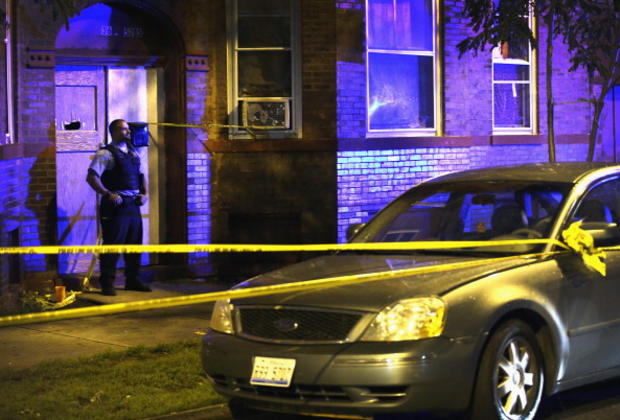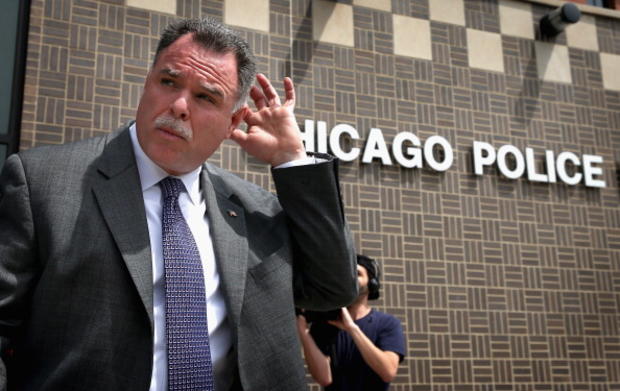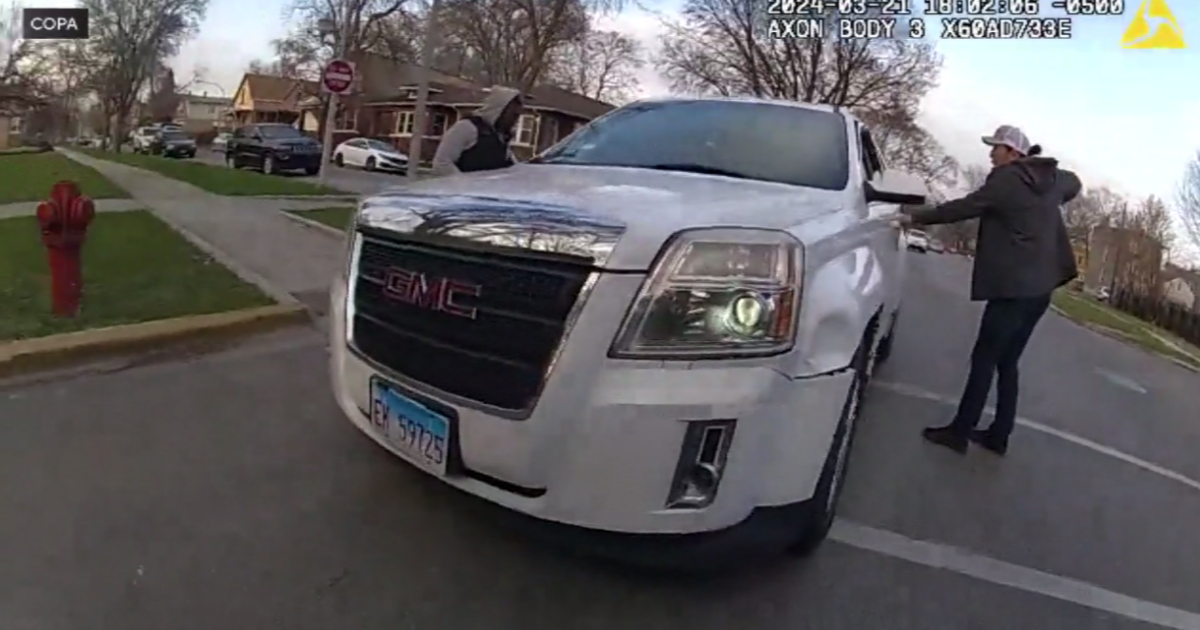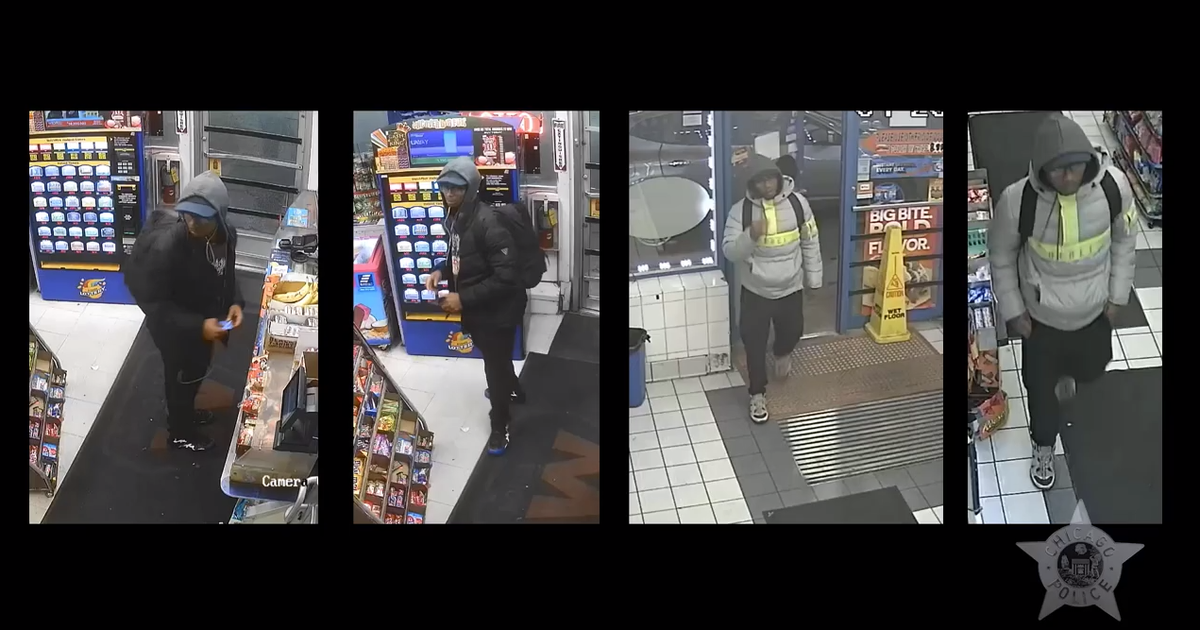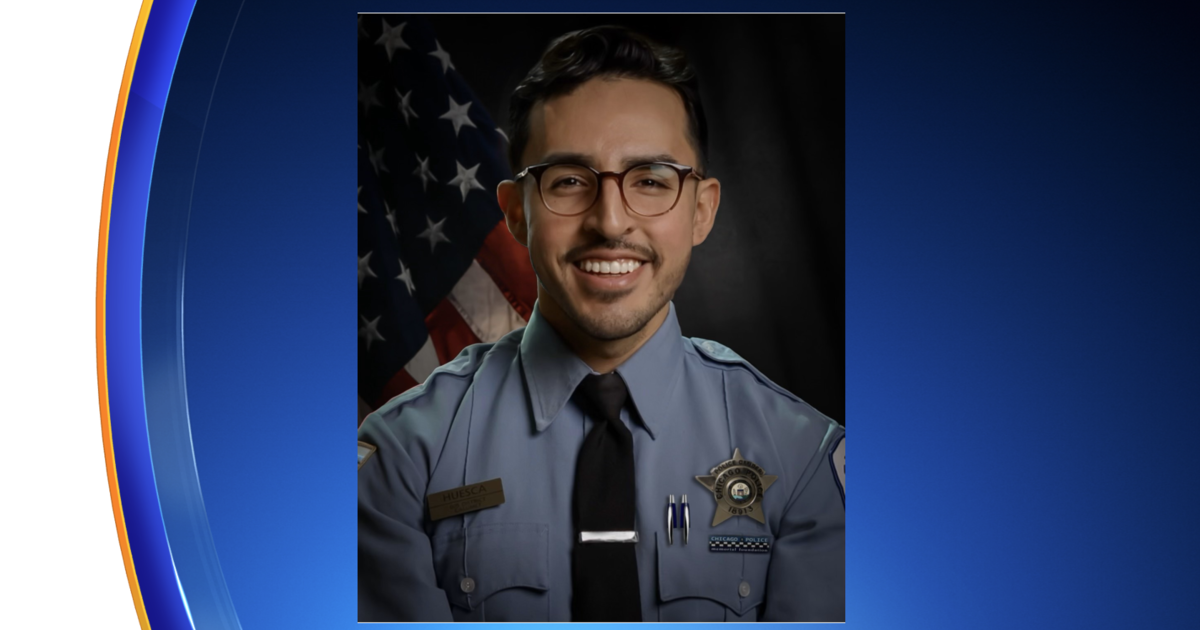Chicago Not Actually 'Murder Capital' Of, Well, Anything
Commentary by Mason Johnson
Thanks to recent headlines, you'd think the FBI rolled out the red carpet and handed Chicago a beautiful, hand-engraved (in cursive!) plaque that reads "Murderiest Murder City in Murderland."
In reality, the FBI did no such thing.
All they did was publish 2012's crime statistics. In fact, at the end of a statement released Sept. 16, they even cautioned against using these statistics for ranking purposes, saying, "These rough rankings provide no insight into the numerous variables that mold crime in a particular town, city, county, state, tribal area, or region."
If the FBI admits their numbers create "misleading perceptions," then why are we, well, propagating misleading perceptions?
Chicago had to have done something to earn the "murder capital" title everyone's been using the past week, right?
Chicago had more murders than any other city in the United States. According to the FBI, that number was 500. The Chicago Police put that number nearer 506. Whichever number you use, we can agree that it's too high.
But Chicago is the third biggest city in the country.
While it's disappointing we had such a large number of homicides in 2012, more than Los Angeles and New York--the two cities in the country that have a higher populations than Chicago--it's misleading to say this number is an accurate interpretation of Chicago's problem with violence. Especially when compared to other cities.
How Does The Homicide Rate Work?
A slightly more accurate--or at least fair--way to look at Chicago's murders is to look at the homicide rate per 100,000 inhabitants.
The homicide rate uses a ratio that takes population into account as an alternative way to communicate the amount of murders in an area. If you dare to compare cities, simply quoting the number of losses does not give an accurate or fair picture. You have to consider the overall population. A small town may have fewer deaths overall, but the percentage of people dying may be much higher.
Let's say Batman's hometown of Gotham City had 200 murders in 2012, while Superman's home of Metropolis had 210 -- which would you say sounds more dangerous? What if I told you the population of Gotham City is 10,000,000 and the population of Metropolis is 11,000,000? If this is the case (and uber fans of these fictional locations know it is), that means .002% of Gotham City's residents were murdered in 2012, and .0019% of Metropolis' residents were murdered in 2012. Translate these into homicide rates per 100,000 inhabitants, and Gotham's got a higher homicide rate of 2 compared to Metropolis' homicide rate of 1.91. Yes, Metropolis may have had more murders than Gotham, but Metropolis' larger population actually means murder occurred less, which some would consider "safer."
To protect Superman's good name, it's imperative we not only look at the total amount of murders in in a city, but also the homicide rate.
If you were to gather the top homicide rates in America, Chicago's high population makes it doubtful it'd even break the top 10.
Before I prove this, I want to repeat, according to the FBI, these numbers can create "misleading perceptions."
What Is Chicago's Homicide Rate?
According to the FBI, Chicago's homicide rate per 100,000 inhabitants is 7.1. So, for every 100,000 people living in the Chicago area, roughly 7 were murdered.
Full disclosure: the FBI bases homicide rates off of metropolitan areas. That means the Chicago area isn't just the 2,708,382 living in the city, but the 9,511,421 living in and around Chicago. The FBI's statistics actually include Chicago; Naperville; Arlington Heights; Elgin; Gary, Indiana; Lake County; and Kenosha County, Wisconsin.
This is probably making some of you angry.
So why do this? I'm not certain of the exact answer. The FBI does the best to communicate the numbers they pull in from local authorities all over the country. This apparently is no easy feat. Consider this: Chicago is part of Cook County, but Cook County extends past Chicago's borders. Is it fair to cut out the portions of Cook County that aren't in the city proper? And how do you do that accurately, if some of the resources that gather crime statistics are dedicated to the whole county?
Not to mention the fact that the city's resources are used by more than its inhabitants. One of my bosses, for example, lives in Indiana. Another lives in a suburb I can't even remember the name of. If they draw on the city's resources and economy every day, how do you determine whether to include them in Chicago statistics?
Whether you like the fact that these statistics include areas outside Chicago or not, you have to admit, Chicago shares an intrinsic relationship -- when it comes to economics, crime and much, much more -- with the suburbs and towns around it.
If the homicide rate is 7.1 when you include the outlying areas, what is it when you only include the 2,708,382 people in Chicago?
According to my math, the homicide rate for Chicago-proper would be a whopping 18.4.
But this is how it is throughout the whole country. Detroit, New York and countless other locales have had their statistics combined with the surrounding areas. To take those areas out would dramatically change the homicide rates determined by the FBI. If I start figuring out rates for areas not designated by the FBI, it'll make these numbers the FBI have collected even more inconsistent than they already are.
For the sake of accuracy and consistency, we're going to go ahead and say Chicago's homicide rate is 7.1.
Yeah, I know, the words "misleading perceptions" are still bouncing around my skull too.
How Does Chicago's Homicide Rate Compare?
Looking through the FBI's statistics, there seems to be at least a dozen places that have higher homicide rates than Chicago.
It seemed unfair to include small areas in this list, so I tried to stick to bigger locales, looking at areas that have more than 200,000 inhabitants.
With that in mind, here's a list of areas that have higher homicide rates than Chicago, in no particular order:
Detroit, MI (Includes the Metropolitan Divisions of Detroit-Dearborn-Livonia and Warren-Troy-Farmington Hills): 10.9
Philadelphia, PA (Includes the Metropolitan Divisions of Camden, NJ; Montgomery County-Bucks County-Chester County, PA; Philadelphia, PA; and Wilmington, DE-MD-NJ): 8.6
Baltimore, MD (Includes Anne Arundel, Baltimore, Carroll, Harford, Howard, and Queen Anne's Counties and Baltimore City): 9.5
Stockton, CA (Includes San Joaquin County): 12.7
Memphis, TN (Includes Crittenden County, AR; Benton, DeSoto, Marshall, Tate, and Tunica Counties, MS; and Fayette, Shelby, and Tipton Counties, TN): 11.5
Jackson, MS (Includes Copiah, Hinds, Madison, Rankin, Simpson, and Yazoo Counties): 13.4
Montgomery, AL (Includes Autauga, Elmore, Lowndes, and Montgomery Counties): 13.9
Mobile, AL (Includes Mobile County): 11.1
Birmingham, AL (Includes Bibb, Blount, Chilton, Jefferson, St. Clair, Shelby, and Walker Counties): 9.4
Baton Rouge, LA (Includes Ascension, East Baton Rouge, East Feliciana, Iberville, Livingston, Pointe Coupee, St. Helena, West Baton Rouge, and West Feliciana Parishes): 11.8
One locale that keeps coming up, besides Chicago, is Flint, MI. The city proper has 101,632 people, while the city including the surrounding area (Genesee County) has 422,387 people. According to the FBI's numbers, Flint has the highest homicide rate of 16.3.
So basically, the highest frequency of homicides, according to FBI statistics, occurs in Flint, MI.
I don't think I'll be calling them the "murder capital" anytime soon though.
Honestly, the FBI seems pretty spot on when they warn about ranking crime amongst cites in the United States.
Doing so implies a lot about what a city is and isn't. All the areas on their list are vastly different. Chicago is not spread out like Los Angeles. Baton Rouge and Detroit are far from similar when it comes to their respective economies.
Ranking and comparing these places doesn't seem to do anything but get page views and write sensational headlines.
Calling Chicago, Flint, or anywhere else a "murder capital" doesn't seem to lessen the violence. For one, it's not an accurate interpretation of the violence in the first place, so it gives no indication of what a city is actually dealing with. For two, the spotlight does a good job of shining light on homicide, but can leave other issues surrounding crime in the dark; unemployment, a lack of social services and a city's economy all suddenly take a back seat in the minds of those only concerned about the number of people shot.
In my opinion, we shouldn't be looking at these numbers and saying, "Aw shucks, Flagstaff, Ariz., had fewer murders than we did!" These numbers are better suited to determine how Chicago has changed. To take a look at ourselves, past and present, in the hopes we can improve.
Even in that context, these numbers should be taken with a grain of salt. Statistics, especially when you look at just one statistic, are one very small part of a very large picture.
The Ghost Of Chicago Past
 Click to enlarge. Graphs make everything make sense. Number of Murder Victims in Chicago over time. (Credit: Chicago Police Department)
Click to enlarge. Graphs make everything make sense. Number of Murder Victims in Chicago over time. (Credit: Chicago Police Department)
Last year, as summer homicides bloomed terribly across a handful of neighborhoods, you heard people declaring Chicago a war zone, saying this was one of the bloodiest years in Chicago history.
More than hyperbole, these comments were just wrong.
Compared to the 433 murders in 2011, yes, things were worse. 500 is definitely a higher number.
It's a smaller number than 513 though, which, according to Chicago Police, is the number of murders in 2008. The 1990s were particularly bad. From 1991 to 2003, murders in Chicago didn't dip below 600. In 1992, there were 943 people killed.
So how's 2013 doing? If DNA Info's murder toll data is right, August 2013 saw fewer homicides than August 2012, 51 and 58 respectively. According to the Chicago Police Department, the first six months of 2013 had 274 fewer shootings and 76 fewer murders than the same time period in 2012. In fact, as of July 1, 2013, Police are saying overall crime is down 14 percent from 2012, and 23 percent from 2011. On Aug. 1, the Chicago Police Department said the city has seen a 25 percent drop in murders for the first seven months of 2013, compared to the same time period last year.
On the whole, the numbers indicate that gun violence is down in Chicago.
With all of this in mind, let's take a look at the neighborhoods. If murders are down from the '90s (they are), are they down across the board, or only in a few specific places?
Thankfully, blogger Daniel Kay Hertz already answered this question for us. Looking at Chicago crime, he created graphs to help track the change of homicides in the '90s to homicides from 2008 to 2011.
He saw something that a lot of us could have guessed. While the city has gotten safer as a whole, in a few areas, it is actually just as bad or worse.
"The North Side saw huge decreases (in Rogers Park, it was over 80%) pretty much everywhere ... The parts of the South and West Sides closest to downtown – Bronzeville, the West Loop, Pilsen, etc. – got a lot safer. But most of the rest actually got worse, including some neighborhoods that were already among the most dangerous in the city, like Englewood and Garfield Park."
See Daniel Kay Hertz's graphs and the rest of his comments here.
So Wait... Chicago IS A War Zone In SOME Places?
No! Have you ever been to a war zone? Stop with these exaggerations!
Okay, fine, as Kanye West pointed out in "Murder to Excellence," more people were murdered in Chicago than American soldiers in Iraq in 2008 (I hope Kanye's editor fact-checked this number).
Obviously, that isn't an apt comparison. For one, it only includes U.S. soldiers. For two, Iraq isn't Chicago.
'Ye didn't necessarily mean that Chicago is a literal war zone (obviously, it's a song). What I think he meant was that some parts of Chicago are like war zones.
From his most recent single, "Black Skinhead," Kanye uses the simile, "Claiming I'm overreacting / like them black kids in Chiraq..."
When he talks about Chiraq, Kanye isn't talking about Lincoln Park or Lakeview. Chiraq isn't Chicago, but some very specific neighborhoods in Chicago where youth are disproportionately murdered when compared to other areas.
(The fact remains, Mr. West, comparing Chicago to a war zone is still an exaggeration that doesn't necessarily help.)
Using RedEye's Homicide Tracker, which tracks homicides from January, 2007 to today, I made a list of some of the North, South and West Side neighborhoods that have more homicides than their surrounding areas.
West Side:
Austin: 225
Humboldt Park: 152 homicides
West Garfield Park: 100
North Lawndale: 110
South Lawndale: 103
South and Southwest Sides:
West Englewood: 149
Englewood: 144
Greater Grand Crossing: 147
South Shore: 133
Roseland: 125
Auburn Gresham: 114
Chicago Lawn: 112
New City: 108 (New City contains the Back of the Yards neighborhood within its borders, which is where 13 people were recently shot)
North and Northwest Sides:
Rogers Park: 27
Logan Square: 25
Albany Park: 25
Belmont Cragin: 27
Have you found it? Have you found Chiraq? It doesn't seem to be on the North Side, that's for sure.
Something to keep in mind: there are 77 community areas ("official neighborhoods" as designated by the University of Chicago about a million years ago). The 16 neighborhoods above are a fraction of the rest of the city. Just because Austin and Englewood have had a lot of homicides the past six years doesn't mean the rest of the South and West Sides have seen this kind of violence.
In fact, they clearly haven't.
For example, the Lower West Side community area, which contains the sometimes vilified neighborhoods of Little Village and Pilsen, only saw four homicides in 2012, which is a lot lower than the West Side's Austin community area, which saw 30 homicides in 2012 . Look at South Side neighborhoods like Beverly, Armour Square, West Elsdon and Oakland (among others), and you'll find they all had only one homicide each in 2012. This is less than Lakeview, which had three homicides in 2012, though, admittedly, Lakeview has a higher population than those other areas, and we know what that means.
Regardless, next time someone says the "South Side isn't safe," do me a favor and fart in their face.
Then there's the North Side. As you can see, the North Side's community areas can't even compete with the South and West Sides.
So when we talk about violence problems in Chicago, we're not talking about Chicago. We're talking about a handful of neighborhoods.
So How Do We Help These Neighborhoods?
I have no clue.
Ask Mayor Rahm Emanuel or Police Supt. Garry McCarthy, and one of their responses is likely to be to curb Chicago's "unique gang problem." The reality is that there are so many gangs that there is no structure, no pecking order. So we have smaller groups fighting over small areas. It's gang anarchy.
While in 2012, McCarthy and Emanuel would talk about anti-gang strategies, lately they've focused on illegal guns, especially in the wake of 13 Chicagoans being shot. According to McCarthy, Bryon Champs, the alleged a gunman in the Back of the Yards shooting who has previous gun convictions, is an example of someone who should have been in jail, as opposed to on the streets. "People have to go to prison for possession of an illegal loaded firearm." McCarthy said. "Because it's the gateway crime to committing a murder."
In fact, McCarthy said, the whole reason for the mass shooting was the fact that Champs was the target of a shooting earlier in the day and wanted to retaliate. So, if Champs were in jail, this whole incident wouldn't have happened.
In an episode of This American Life about Englewood's Harper High School, Linda Lutton, who covers education for WBEZ, said, "There's no central leader, no hierarchy, no colors. The fights aren't over drug territory. In fact, lots of these gangs aren't even selling drugs. They're different gangs, with different rules."
Moments later, Lutton goes on: "Today, whether or not you want to be in a gang, you're in one. If you live on pretty much any block near Harper High School, you have been assigned a gang. Your mother bought a house on 72nd and Hermitage? You're S Dub. You live across the street from the school? That's D-Ville."
Episode 487 of This American Life highlighted that gun laws and anti-gang strategies aren't solely what neighborhoods like Englewood need. It seems that individuals turn to gangs because, oftentimes, there's a lack of resources in the community causing kids to turn to gangs for safety and shelter. How do you make up for a lack of safety and shelter? Or, as others might phrase it, how do you make up for a lack of jobs and education?
One organization, R.A.G.E. (Resident Association of Greater Englewood), is trying to handle Englewood's violence and lack of resources with "peaceful projects." By bringing the community together in parks for festivals that include fun, food and music, R.A.G.E. thinks there can be more peace in what is regarded as a violent community. "We call it positive disruption. People aren't coming by to rob folks if you have a ton of people out with music and fun," said Aysha Butler, member of R.A.G.E. "The issue of violence will probably never go away. I mean I don't know what's going to happen with violence but what it does for us is we keep creating more peace."
How can those from outside these communities like me and quite possibly you help improve these neighborhoods? Well, one way is to realize something R.A.G.E. is already proving to us: that these neighborhoods are, well, just that... neighborhoods. They're families and schools and stores and playgrounds. They're not statistics. They're not homicide rates. They're not the violence that assaults them, nor are they "war zones." If this is the impression you get of these neighborhoods, you are not only wrong, you are ignorant. These neighborhoods are filled with a lot of people who want nothing but the best for the places they call home.
A second way we can help is by offering our support to worthwhile organizations. Personally, I support Growing Home. Growing Home is a job training organization that works with individuals who've had trouble obtaining work because of a history of incarceration, homelessness, or substance dependence through organic agriculture. They have farms in Englewood and Back of the Yards (yes, actually inside the city!) along with Marseilles, Illinois. I think they're pretty cool.
Finally, as we read and watch more news reports about the shootings in Chicago, we should keep our minds and eyes open. Next time we see sources calling Chicago the "murder capital," we have to step back and ask ourselves if this is true. We should read multiple sources and, when possible, look at the data ourselves instead of just believing someone else's interpretation. We should hold others, and ourselves, accountable for information and the narrative we try to spin from it.
Ultimately, Chicago is our city. Not just the neighborhood you live in or the block you live on, but all of it. The least we can do is make sure the narrative of Chicago isn't an exaggeration, or even the opposite, but something that is as close to the truth as we can get.
Mason Johnson is a Chicago native who lives in Logan Square. He attended Columbia College Chicago and is a Web Content Producer for CBS. You can find him on Twitter.
Resources: FBI Releases 2012 Crime Statistics; FBI: Crime in the United States by Metropolitan Statistical Area; RedEye Homicide Tracker; CPD's Chicago Murder Analysis; DNA Info's Chicago Murder Toll; 'Cops tout lowest homicide count since '65, CPD data show virtual tie with '11'; 4 Men, Including 2 Gunmen, Charged In Mass Shooting; Resident Associate of Greater Englewood; Growing Home; We've Talked About Homicide In Chicago At Least One Million Times But I Don't Think This Has Come Up by Daniel Kay Hertz; Chicago Finishes 2012 With 506 Homicides; Residents Say There's More To Englewood Than Violence; This American Life Episode 487: Harper High School


